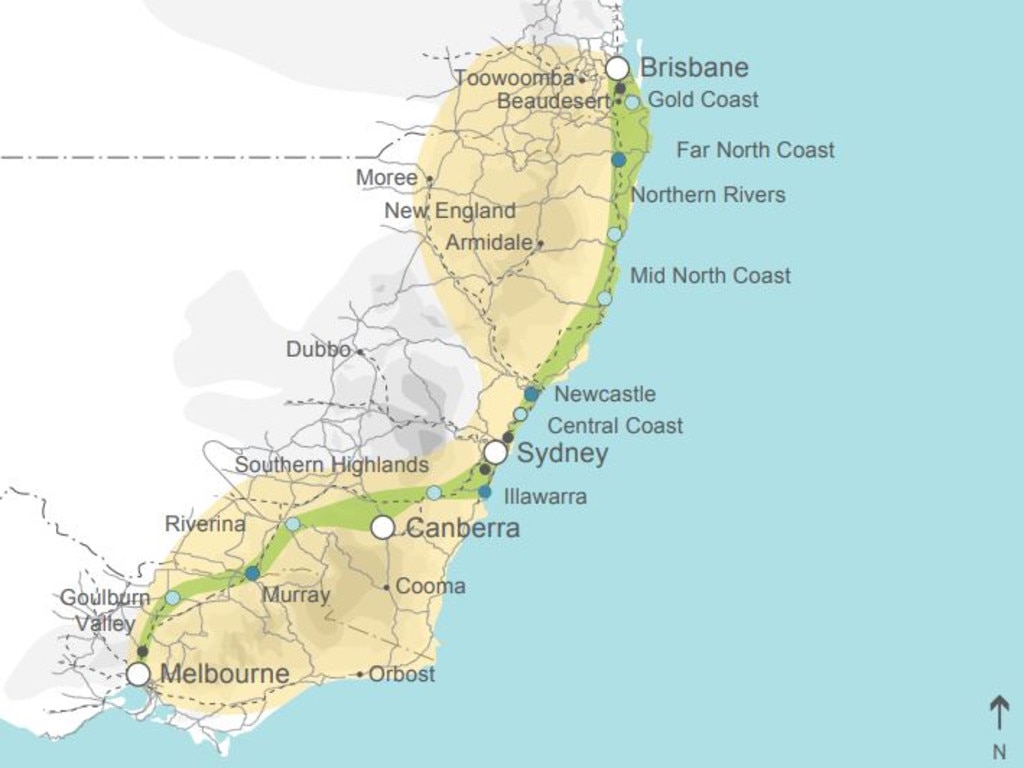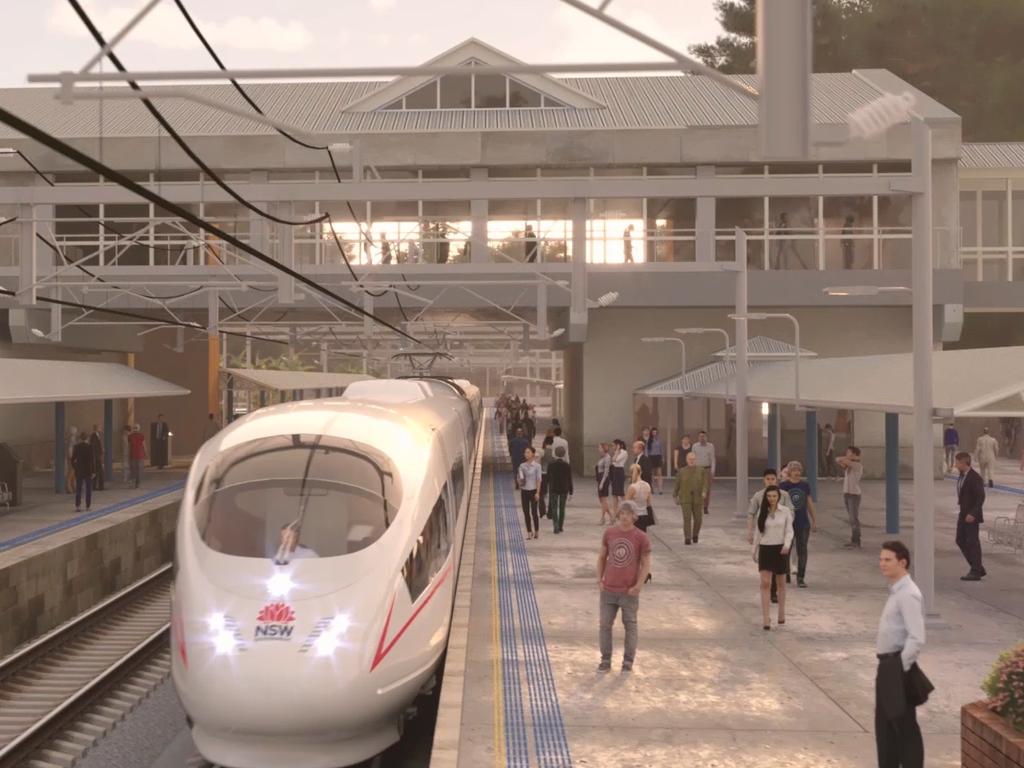Why high-speed rail won’t save Australia from economic impacts of coronavirus
It’s a project that’s been touted as a possible “cure” for the economic impacts of the virus, but not everyone believes it will help.
Anthony Albanese recently branded the coronavirus crisis a “once-in-a-generation” opportunity to reshape Australia’s economy, after the pandemic revealed the “inconvenient truth” that the country’s economy may not be as resilient as many would like to think.
One of the plans the Labor leader suggested to support the country’s economic recovery was a high-speed rail system.
The possibility of building a high-speed train line in Australia has long been discussed, with Labor even publishing a feasibility study on the project in 2013.
The study estimated that the cost of the rail would be about $114 billion and would likely take more than 50 years to complete.
Despite the long timeline there are many appealing aspects of building a high-speed rail system and as a result there are a lot people that support the idea.
RELATED: Follow the latest coronavirus updates

On Monday, News.com.au columnist Joe Hildebrand wrote an article backing the idea to finally start the project, claiming the fast train could be Australia’s “coronavirus cure”.
But not everyone agrees that undertaking a major infrastructure project like this is the key to getting the economy back on track.
Transport and Cities Program Director for the Grattan Institute, Marion Terrill, claims a fast train from Brisbane to Melbourne via Sydney and Canberra would be a waste of money and wouldn’t be as useful as many people may think.
“About every 10 years or so one of these proposed ideas for high speed rails emerges. It gets studied and then killed off because they are too expensive and not viable,” Ms Terrill told news.com.au.
“This proposal developed by Labor is just not suitable for Australia. One of the main reasons is because our population and distances are just not suited for a fast rail system. We are too small and too spread out.”
She pointed out that countries like Canada and the US which are similar to Australia don’t have high speed rail systems either.
Places that do have them, such as Japan, China and areas of Europe, have larger population catchments that allow the project to work.

“China has very long distances but enormous population catchments. In Australia our population centres are quite small and far apart,” Ms Terrill said.
Another argument for introducing a high-speed rail system is to reduce harmful emissions by cutting the need for air and car journeys.
However, this argument ignores the fact that the railway has to be built in the first place, which Ms Terrill points out is a very “emission intensive process”.
If Labor’s 2013 study is right, the railway would take more than 50 years to build, with Ms Terrill pointing out the planning phase alone would also take about 15 years.
At the time the feasibility study found the benefits of the project would outweigh the cost of the building it, however it is likely that if the study was done today the findings would be different.
Ms Terrill said in the initial study it was assumed there wouldn’t be a second Sydney airport, but now that one is being built it reduces the need for a high-speed rail system through the area.
“The study had a positive finding but it didn’t make any comment on who would pay for the railway line,” she said.
“If you did factor that in then you would probably get a different finding.
“You can’t ignore the fact that someone has to pay for it. Particularly now with a lot of additional debt building because of the pandemic.”
Ms Terrill also pointed out that the proposal put forward in 2013 wouldn’t actually be very beneficial to people in regional cities, despite claiming it would assist commuters.

“Initially a shuttle route between Newcastle and Sydney was proposed. That is something you think would be helpful. But by the second report they had completely abandoned that idea. The basic reason for this was because it would be too expensive,” she said.
“If you are going to properly service rural towns and cities you have to have the trains stop in the city centre but this would be very difficult and expensive to tunnel and build.
“Because of this, the report proposed that trains would stop kilometres outside regional centres.”
The stop at Newcastle was proposed as being 20km outside the CBD and the Gold Coast stop would be situation inland near the suburb of Robina.
“They didn’t even include Wollongong, even though it is a key regional city, because of how difficult the tunnelling would be,” Ms Terrill said.
“All of these decisions made the project cheaper but it also meant that it undermined the ability to serve regional populations.
“Trains are very popular and there is a good reason for it. But in the end the taxpayers are the ones paying for all of this. You want something that is useful rather than a project that takes forever to build then isn’t going to even be that useful for the people it is supposed to help.”




